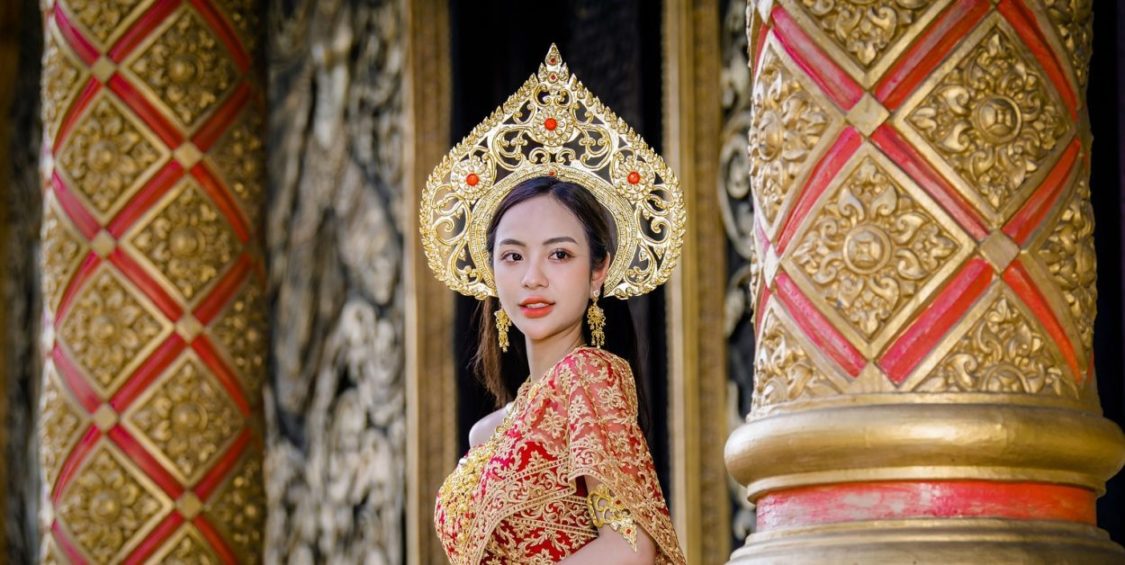Thai Smiles: Understanding Their Different Meanings

Thailand famously is known as “The Land of Smiles”. The Thai smile’s legendary status can be traced all the way back to the Ayutthaya Period (14th – 18th Centuries), with foreigners writing in travelogues about “Yim Siam” (ยิ้มสยาม) — the word “yim” meaning smile in the Thai language.
Westerners, who have a tendency to frown more than smile, have long been charmed by the Thai smile. However, it also has been the source of occasional confusion, much like the confusion that surrounds the “art of being greng jai” in Thailand.
Foreigners (especially farangs) tend to smile only on one or two occasions: when they are happy, or when they are being sarcastic. But in Thailand the smile is inextricably entwined with the country’s face-saving culture. The Thai people use smiles to convey (or hide) symptoms such as anger, disappointment, shock, discomfort, incomprehension, embarrassment, and fear — as well as to express happiness, sincerity, gratitude, and friendliness.
Unaware of a Thai smile’s many possible meanings, foreigners can sometimes mistakenly believe a Thai is being deceitful in some manner, when in reality they are just seeking to maintain their internal equilibrium and bring harmony to the situation at hand — harmony being one of the highest Thai virtues.
The Different Thai Smiles & Their Usage
A key element to understanding the Thai smile is realizing that Thais express their feelings and opinions much less freely than foreigners in Western countries. This is especially true with acquaintances, co-workers, and casual friends. Even among close friends and family members, they often express themselves less openly than foreigners do.
Not being overly chatty (like farangs so often are) saves Thai people a lot of unnecessary headaches and troubles. Just think of all the problems you could have side-stepped if you had talked less and smiled more. A Thai smile often is used as shorthand to express a feeling or opinion. Reading such smiles correctly requires emotional sensitivity and takes a little practice, but most people can get the hang of it after awhile.
The Thai Smile of Appreciation: Thai people rarely express their gratitude in words beyond a quick “Thank you” (Khawp khun khrap/kha), even among family members. One reason is that Thais (especially those who are devout Buddhists) believe that good deeds toward others are what all people should do. However, all will show a smile of appreciation when a good deed is done to them.
The Thai Smile of Greeting: This is the smile that visitors to Thailand are deeply familiar with, and one which the Tourism Authority of Thailand uses in its campaigns to promote Thailand as “The Land of Smiles”. This Thai smile has a close connection with the smile of appreciation. You will know that a smile of greeting is sincere by looking at the eyes of a Thai person, as they will smile with their eyes their appreciation, along with the smile on their lips. The smile greeting also is used as a courtesy when approaching anyone at a store, restaurant, or business, as well as when seeing friends, co-workers, and family.
Sometimes only a smile is used as a greeting and no words are said. So, you should never be offended when walking by a Thai person you are acquainted with (even an extended family member) if they don’t offer a verbal greeting but only smile.

The Thai Smile of Acceptance: The famous “Serenity Prayer” asks God to grant us the serenity to accept the things we cannot change, the courage to change the things we can, and the wisdom to know the difference. During the course of our work day, we often meet with frustrating things that we cannot change. Instead of reciting the Serenity Prayer on these occasions, Thais offer up a smile of acceptance and get on with the rest of the day.
Thai people try to deliver this type of smile in a relaxed way, to demonstrate that they are not the kind of person to get uptight about situations they have no control over. But in really troubling situations, the casual smile of acceptance becomes what the Thais call “fĕun yím” (ฝืนยิ้ม), which means to force a smile.
The Thai Smile of Ridicule: When somebody does something stupid, especially something we told them repeatedly not to do, we might say “Serves you right!” The Thais have an equivalent saying, “Som nam nah” (สมน้ำหน้า), which often is accompanied by the Thai smile of ridicule, delivered in a good-natured, humorous way.
The Thai Smile of Sadness: People who have never attended a Thai funeral are sometimes surprised by the amount of smiles on the faces of the mourners. What you are seeing at such events is the sad Thai smile, which appears whenever the heart is heavy. This smile is good medicine in helping fight back the tears. It also is helpful in focusing the mind on life’s blessings despite the tragedies.
The Thai Smile of Embarrassment: When Thais communicate with foreigners, they often will feel embarrassed because they believe their English isn’t any good or they don’t know the answer to something they think that they should know. It’s good to keep on the look-out for this Thai smile, because when you identify it, you can take steps to alleviate any unwarranted embarrassment, such as by making fun of yourself and your own shortcomings.
The Thai Smile of Confusion: This smile often is linked with the smile of embarrassment. Thus it is another one that all foreigners who work with Thais should be aware of — because if you are not paying close attention, you might misinterpret this smile as meaning a person understands what you are saying. The eyes truly are the windows of the soul. So always check to see that a Thai person’s smile matches what you see in their eyes. The Thai smile of confusion is one of the easiest to identify because you’ll see the confusion in their eyes.
The Thai Smile of Anger: This is a Thai smile that hopefully you will never see. But if you do, be careful and defuse the situation as quickly as possible, especially if you are dealing with a Thai man, and any alcohol has been consumed. Thais are experts at masking their emotions with a smile, but when situations get heated and/or alcohol is involved, the mask can easily drop and (in some situations) violence could ensue. If it occurs in the workplace, you could end up with a lifelong enemy, especially if the Thai smile of anger ends up in voices being raised and the Thai person loses face for having shown their anger.
The Thai Smile of Happiness: This smile doesn’t really need any explanation, as it is universal. Thais deliver a happy smile more beautifully, and with greater joy and charm, than any other people in the world. So, during your stay in Thailand, do everything you can to make the Thais you meet happy. That way you’ll get to enjoy the greatest amount of these famous, enchanting smiles.
- Affirmations in Buddhism & Thailand - June 7, 2025
- Speak Thai Naturally Without the Gymnastics - April 20, 2025
- The Best Learn Thai Podcast and YouTube Channel - April 10, 2025




